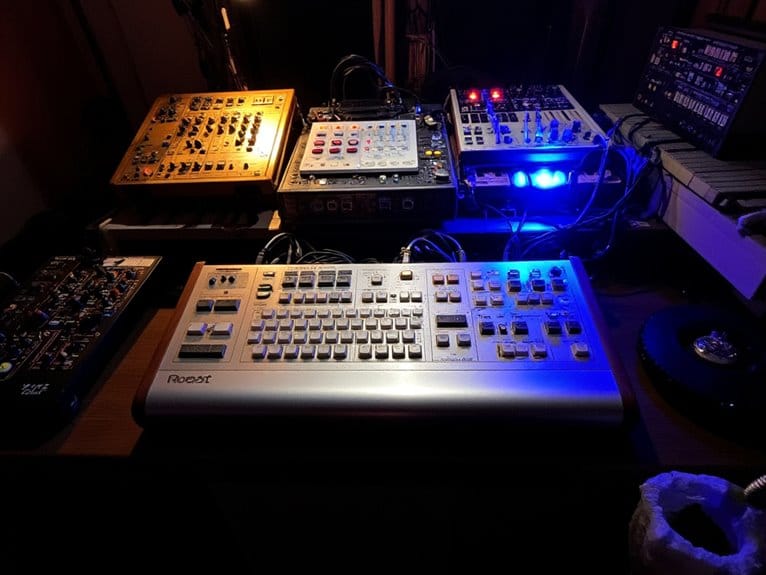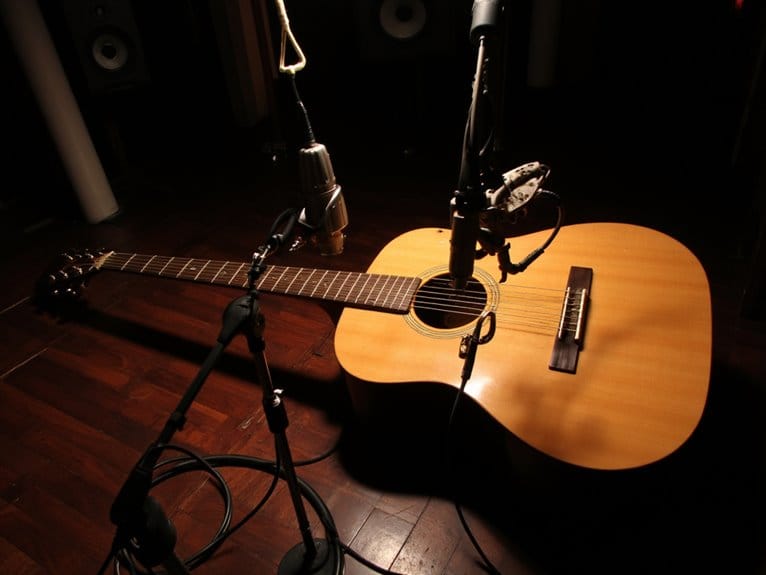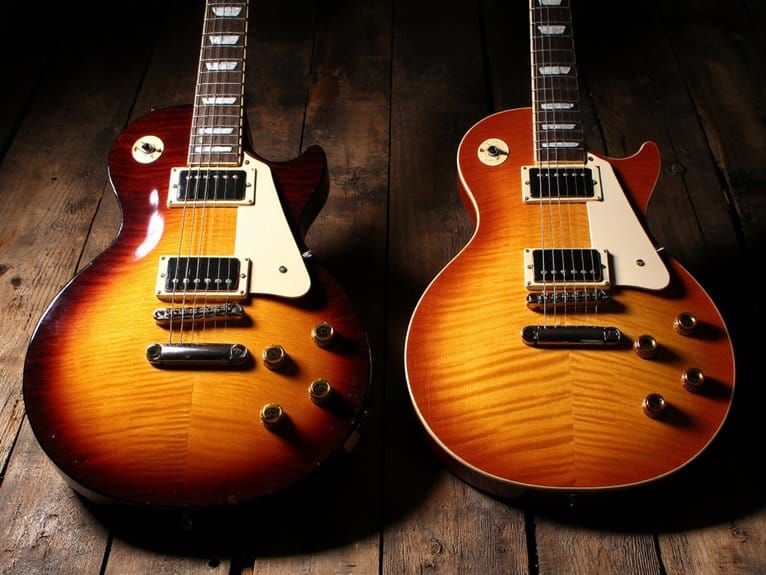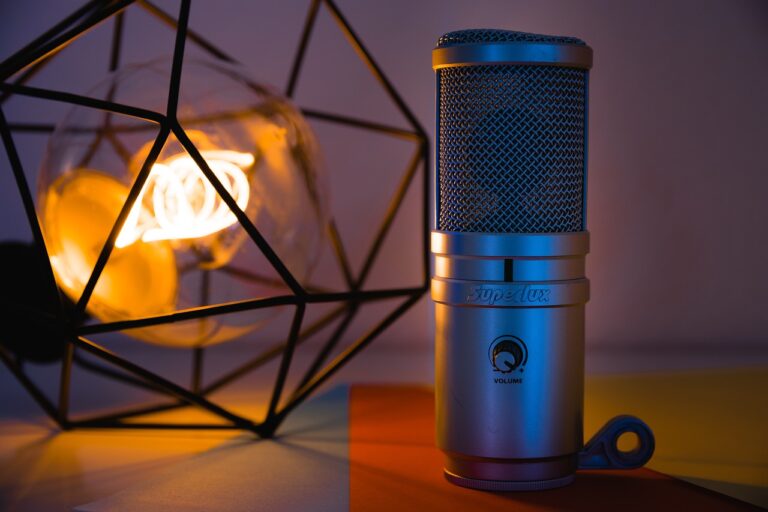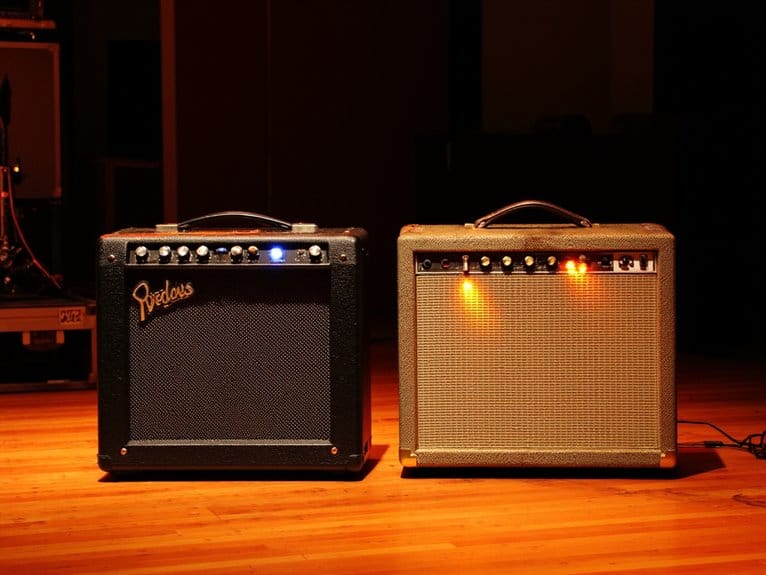Bass Synthesis: From 808s to Modern EDM
You’ve witnessed bass synthesis evolve from the Roland TR-808’s accidental analog boom in 1982 to today’s sophisticated EDM productions that stack sub-bass, midrange grit, and high-frequency clarity across three distinct layers. The journey includes the Novation Bass Station’s dual oscillators in 1993, Kevin Saunderson’s detuned sawtooth Reese bass from 1988, and modern techniques like sidechain compression that create those signature pumping effects. There’s considerably more technical ground to cover in this sonic evolution.
We are supported by our audience. When you purchase through links on our site, we may earn an affiliate commission, at no extra cost for you. Learn more.
Notable Insights
- The Roland TR-808’s analog synthesis created distinctive booming bass sounds that defined hip hop, electro, and EDM genres starting in 1982.
- Reese bass, created using detuned sawtooth oscillators, became iconic in drum & bass and later influenced dubstep and modern EDM production.
- Modern EDM bass design involves layering three frequency ranges: sub-bass foundation, midrange grit, and high-frequency clarity for full-spectrum impact.
- Sidechain compression became essential for creating EDM’s signature pumping effect while maintaining mix clarity and preventing frequency overlap.
- Contemporary bass synthesis combines analog-inspired techniques with digital processing, using multiband compression and careful EQ for optimal translation across playback systems.
The Revolutionary Impact of the Roland TR-808
Revolution-that’s the only word that adequately captures what happened when Roland Corporation released the TR-808 drum machine in 1982, though I doubt they realized they were about to fundamentally reshape the sonic landscape of popular music.
You’ve probably heard that distinctive booming bass drum in countless hip hop, electro, and EDM tracks, but what makes the TR 808 Legacy so enduring isn’t just its sound-it’s how it democratized music production.
Unlike sample-based machines, the 808’s analog synthesis created those synthetic, futuristic tones that defined entire genres.
The Sound Evolution it sparked continues today, with its deep sub-bass frequencies and programmable sequences becoming the foundation for modern electronic music production worldwide.
Pioneering Synth Bass: The Novation Bass Station Era
While the TR-808 was busy revolutionizing drums and basslines, another machine was quietly establishing itself as the definitive bass synthesizer that would shape electronic music for decades-the Novation Bass Station, first released in 1993.
You’d find two digitally controlled analogue oscillators working alongside selectable filter types, including that legendary Acid diode ladder filter that became synonymous with the novation legacy.
The real magic happened when you combined its 32-step sequencer with probability controls and macro automation, enabling unprecedented sound experimentation that producers still chase today.
I’ve watched countless artists rely on its X-Modifier function for real-time parameter manipulation, while the dual filter system delivered everything from warm vintage tones to aggressive acidic basslines.
Reese Bass and the Birth of Iconic Electronic Timbres
In 1988, when Kevin Saunderson fired up his Casio CZ-5000 and stumbled upon what would become the most influential bass sound in electronic music history, he couldn’t have predicted that his experimental phase distortion patch would define entire genres for the next three decades.
You’ll recognize this warbling, chorused bass from his track “Just Want Another Chance,” where detuned sawtooth oscillators created that signature thick, evolving texture.
The Reese evolution truly exploded when Ray Keith’s 1993 “Terrorist” brought the sound to UK’s emerging drum & bass scene, demonstrating its jungle influence.
Today, you’ll hear variations across dubstep, neurofunk, and contemporary EDM, proving that sometimes the most groundbreaking innovations come from pure experimentation rather than theoretical design.
Contemporary EDM Bass Design and Production Techniques
Today’s EDM producers have transformed bass design into a sophisticated layering techniques art form, where you’ll typically stack three distinct frequency ranges-sub-bass for that chest-thumping foundation, midrange grit that cuts through smartphone speakers, and crystalline high-frequency content above 2-3 kHz that adds definition without muddying your mix.
Your production workflow should incorporate sidechaining these layers to your kick drum, creating that signature pumping effect while maintaining clarity. Modern compression strategies like parallel processing blend dry and heavily compressed signals, enhancing presence without sacrificing low-end power.
Sidechain compression creates the iconic EDM pump while parallel processing maintains your bass power and mix clarity.
Sound design starts with basic sine waves, then you’ll apply ADSR envelope tweaks and LFO modulation to create dynamic basslines.
Frequency balancing through multiband compression and careful EQ prevents overlap, especially below 100 Hz, ensuring your bass translates across all playback systems.
On a final note
You’ve witnessed bass synthesis evolve from the TR-808’s analog warmth through the Bass Station’s digital precision to today’s layered EDM productions. While I can’t predict what’s next, you’re now equipped with the foundational knowledge to craft compelling low-end content. Whether you’re programming classic 808 kicks, designing reese patches, or sculpting modern sub-bass, remember that effective bass synthesis balances technical understanding with creative intuition-something no preset pack can truly replicate.

